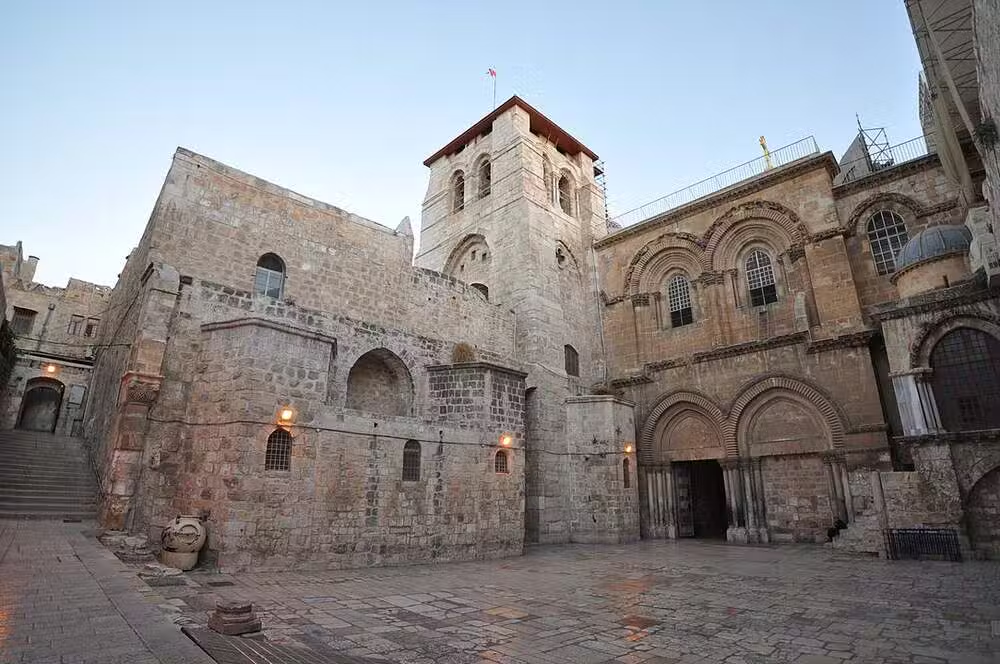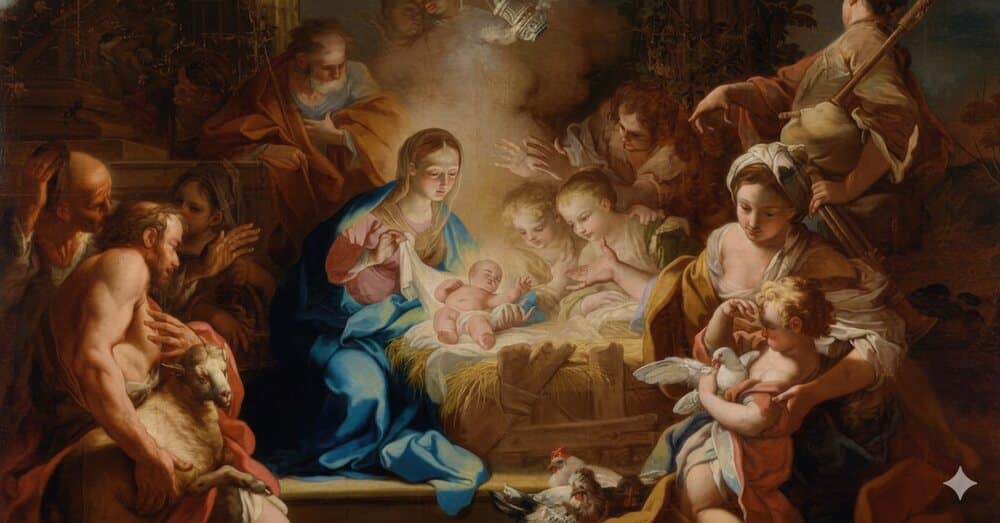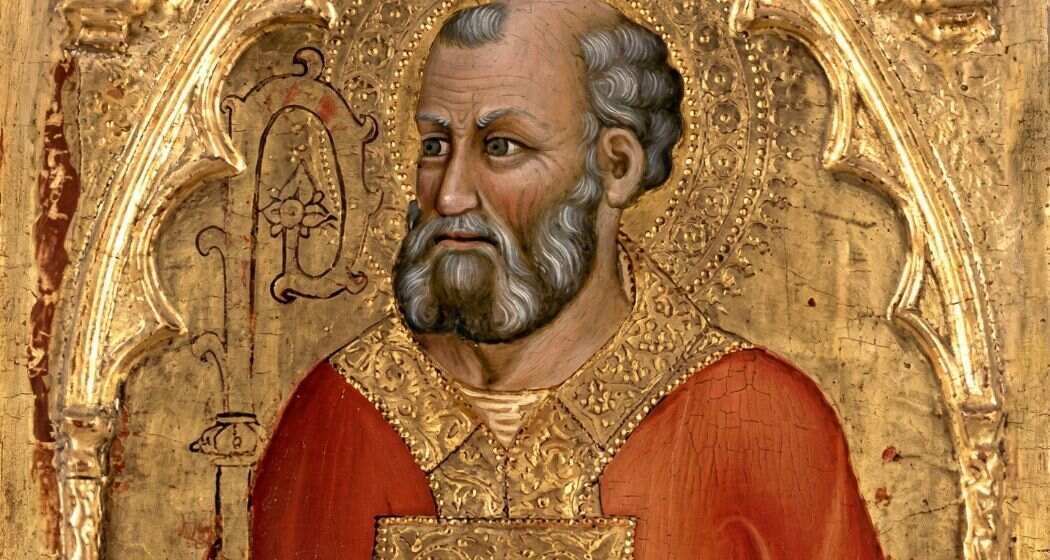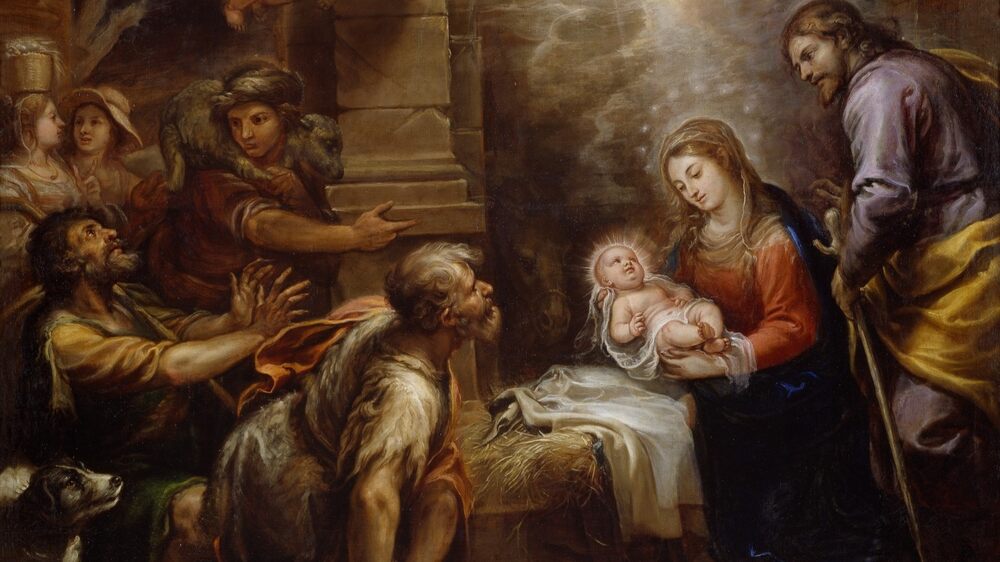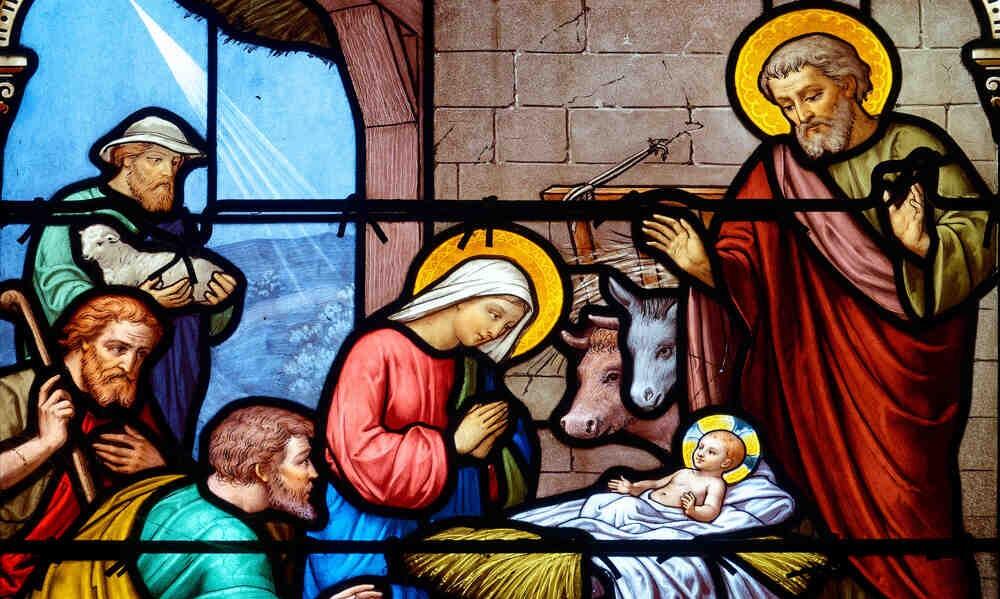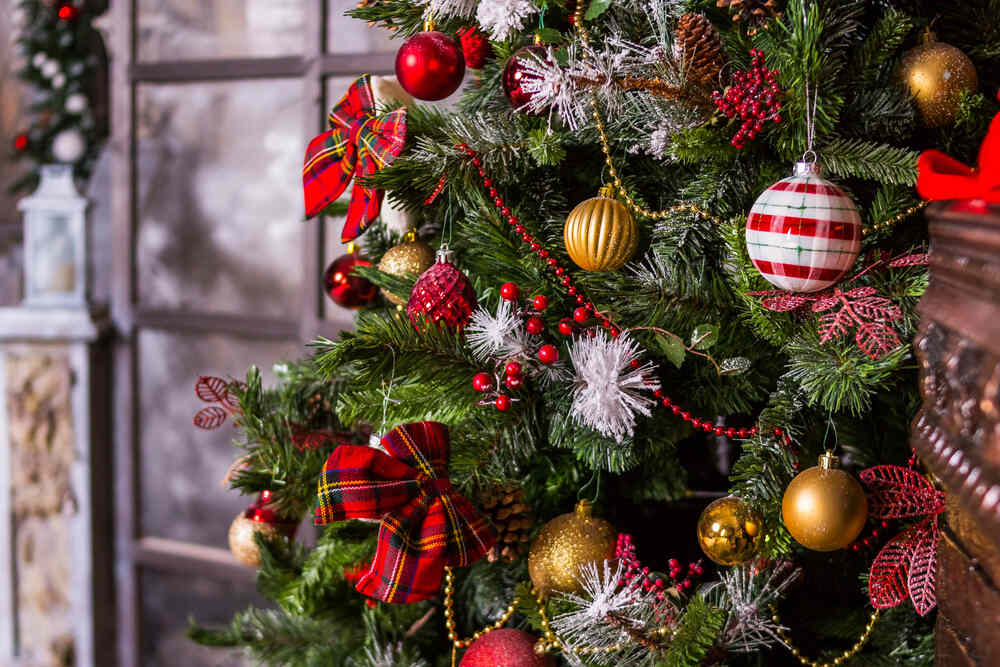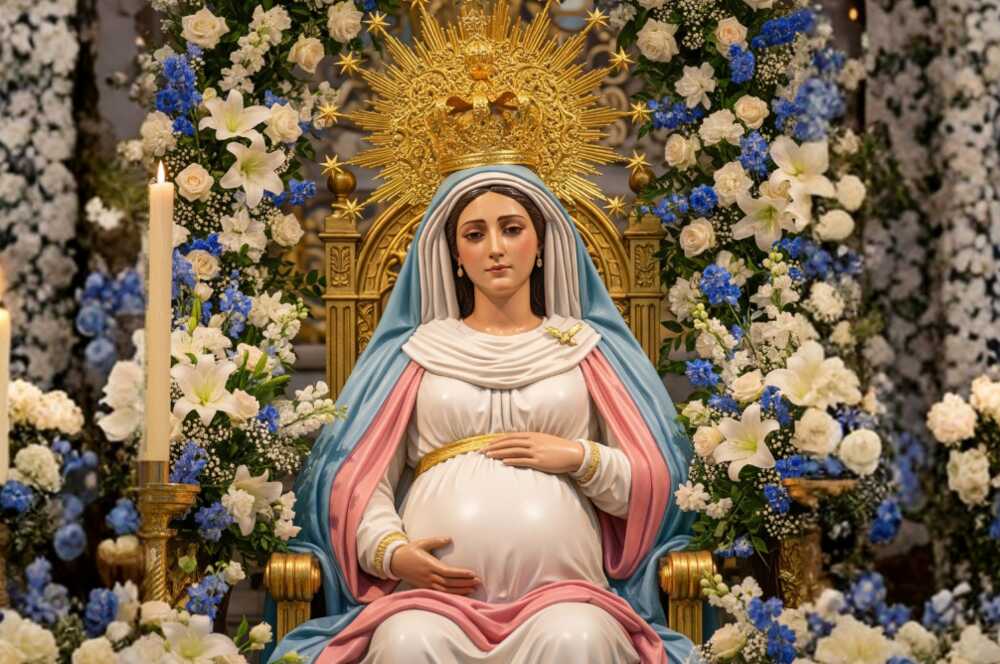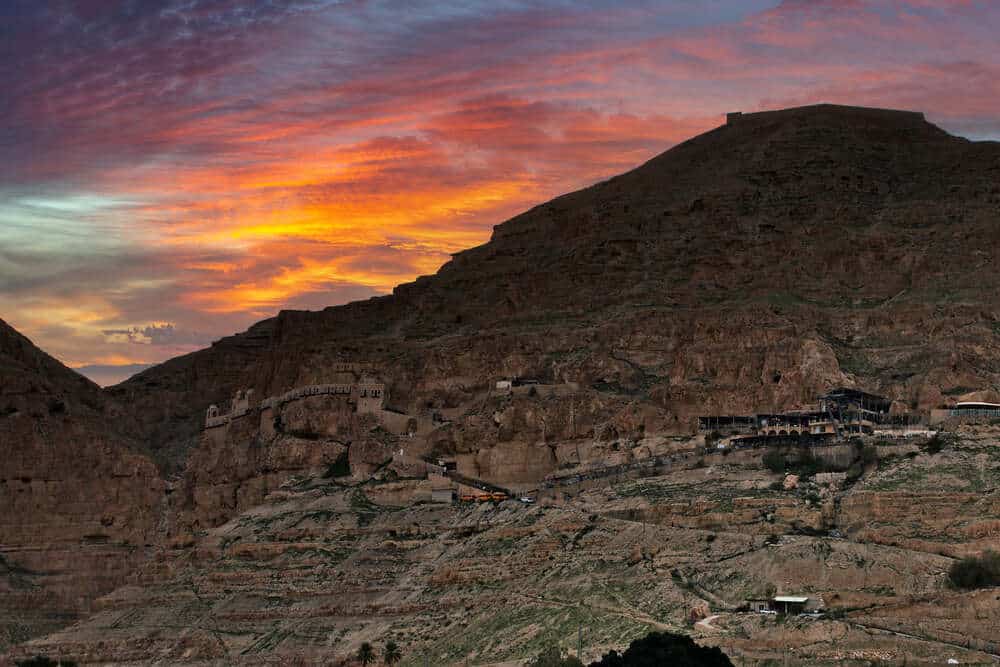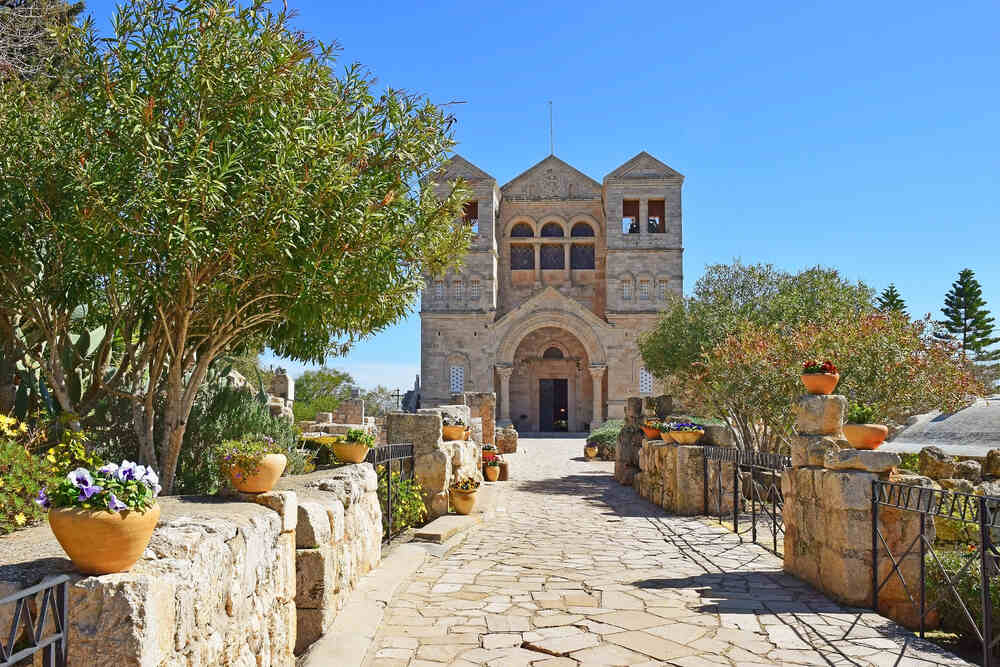Jerusalem is the holy city of God, a city of peace, as its name indicates, and of wars. It is a unique city, where the three great religions of the world have their most important pilgrimage sites. In Jerusalem was the Temple of the people of Israel, which housed the Ark of the Covenant. In this land, Our Lord Jesus Christ suffered, was crucified, died, and rose from the dead. And here is the mount on which Abraham was about to sacrifice his son Isaac. In Jerusalem are the ruins of the Temple, the Basilica of the Holy Sepulchre, and the Dome of the Rock, the most sacred sites for Jews, Christians, and Muslims.
Jerusalem has suffered sieges, conquests, and destructions for more than two thousand years. Despite this, by Divine Providence, the holy places still stand. And pilgrims continue to visit them. Evidently, the Lord protects his city and its inhabitants. Most of these sites are located in the Old City of Jerusalem, although some holy places are located outside its walls. It is divided into four distinct quarters: Christian, Armenian, Jewish, and Muslim.
In this post, we share a pilgrim’s guide with 7 holy places in Jerusalem that you cannot miss if you have the opportunity to travel to the Holy Land. With it, you will discover the most important and decisive sites of the life of Jesus (and of our faith) in Jerusalem.
1. Church of Saint Anne
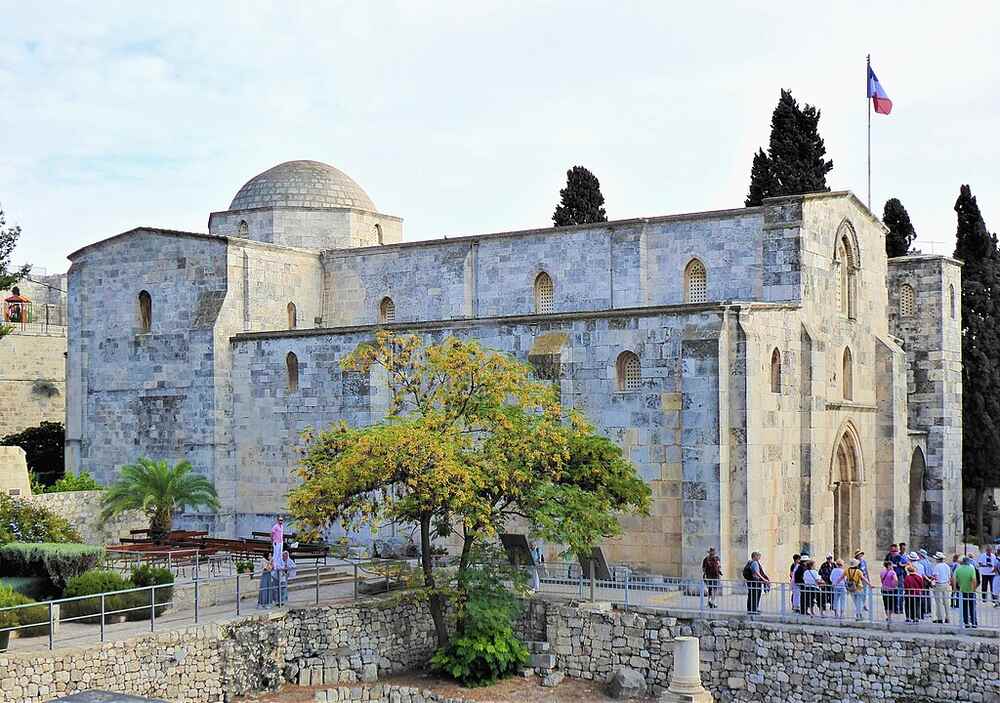
By Chris06 – Own work, CC BY-SA 4.0, https://commons.wikimedia.org/w/index.php?curid=113293533
One of the oldest and most emblematic churches in Jerusalem is the Basilica of Saint Anne, also called the Basilica of the Nativity of the Virgin. It is located in the Muslim Quarter of the Old City, very close to the Pool of Bethesda—where Jesus healed the paralytic who had been ill for thirty-eight years—and the Lions’ Gate. This church was built on the house of Saint Anne and Saint Joachim.
During the Roman Empire, the pool was covered and a pagan temple dedicated to the god Serapis was built over it. Later, in the 5th century, a Byzantine basilica was constructed but destroyed during the Persian invasion of Jerusalem in 614 AD.
The current structure, a beautiful example of Romanesque architecture, was built between 1131 and 1138 under Queen Melisende. Its crypt is especially venerated, as tradition holds it to be the birthplace of the Blessed Virgin Mary.
After the conquest of Jerusalem in 1187, Saladin converted it into a mosque. Over time, it was abandoned and fell into ruin. In 1856, Ottoman Sultan Abdülmecid I gifted it to Napoleon III, and since then it has belonged to the French government.
Since 1877, the basilica has been entrusted to the Missionaries of Africa, commonly known as the White Fathers.
- For more information about this Church, visit the website of the Church of Saint Anne in Jerusalem.
- Location: Q6JP+9F Jerusalem, Israel.
2. Pool of Bethesda
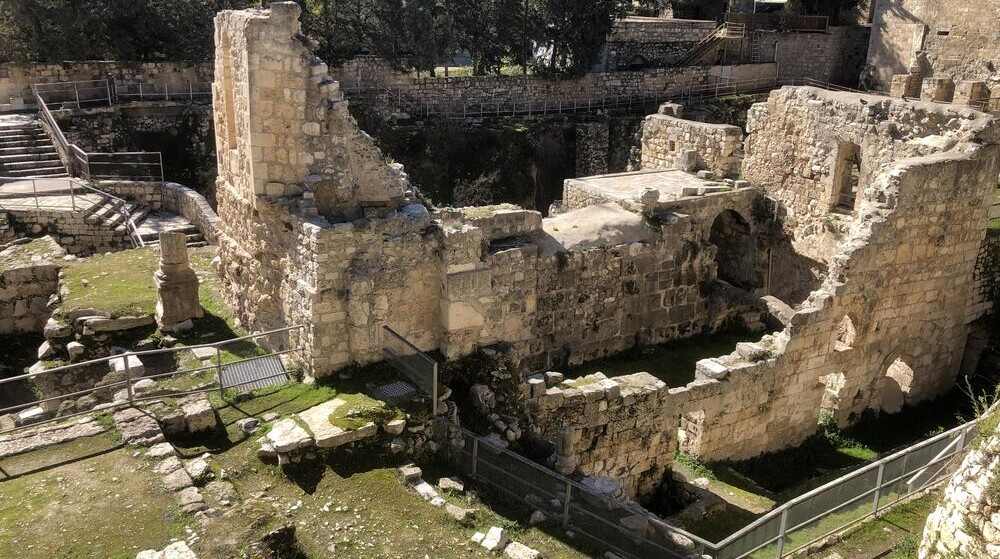
https://ste-anne-jerusalem.org/wp-content/gallery/bethesda/beth-11-moustier.jpg
This pool dates back to the time of Herod the Great (37-4 BC) and was built in the form of two ponds—one to the north and one to the south—in a natural valley that collected rainwater. The two ponds, surrounded by five porticoes, were separated by a dam. The northern pond was used to collect fresh rainwater, while the southern pond was used for religious ablutions or for the bathing of the sick, who sought healing.
It was here that Jesus healed the paralytic man who had been ill for 38 years. The event was recounted by the evangelist Saint John:
“Now there is in Jerusalem near the Sheep Gate a pool, which in Aramaic is called Bethesda and which is surrounded by five covered colonnades. Here a great number of disabled people used to lie—the blind, the lame, the paralyzed. One who was there had been an invalid for thirty-eight years. When Jesus saw him lying there and learned that he had been in this condition for a long time, he asked him, “Do you want to get well?” “Sir,” the invalid replied, “I have no one to help me into the pool when the water is stirred. While I am trying to get in, someone else goes down ahead of me.” Then Jesus said to him, “Get up! Pick up your mat and walk.” At once the man was cured; he picked up his mat and walked.” (John 5:2-9)
In the early centuries, the northern pond was progressively covered. During the Roman era, the southern pond continued to function as a place for ritual baths and healing dedicated to the Roman god Serapis.
During the 5th century, under the episcopate of Juvenal of Jerusalem (442-458 AD), a large Byzantine church was built here. Unfortunately, it was destroyed during the Persian invasion of Jerusalem in the year 614. Only some walls and arches, parts of columns with their capitals, and, in the northern area, a fragment of a beautiful mosaic that probably belonged to a chapel intended to preserve relics of saints (a martyrion) remain of it.
Already in the 7th century, Christians tried to rebuild the place, but they could only erect a small chapel. During the Muslim era, both the chapel and the southern pond were abandoned and destroyed. When the Christians conquered Jerusalem in 1099, the crusaders built a small monastery on the ruins of the old chapel and, next to it, the church dedicated to Saint Anne, the mother of the Blessed Virgin Mary. The ruins of the pools are part of the entire complex of the Basilica of Saint Anne.
- For more information about this Church, visit the website of the Church of Saint Anne in Jerusalem.
- Location: Q6JP+9F Jerusalem, Israel.
3. Mount Zion
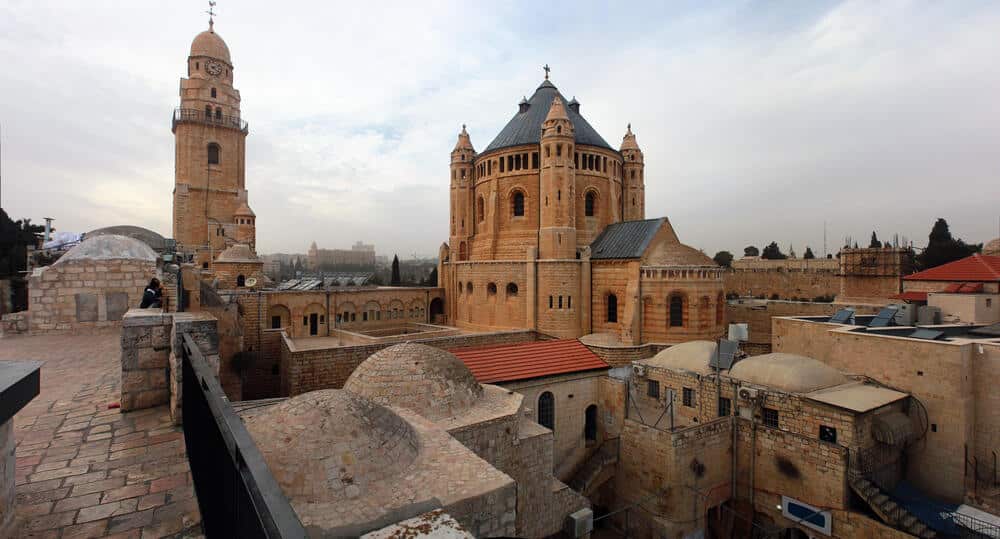
Mount Zion is located in the southwestern area of ancient Jerusalem. It appears in the Holy Scripture as the holy mountain of Jerusalem, the dwelling place of God in the Temple, and the symbol of his presence. It is a heavenly place according to the Psalms. The fundamental events that occurred there confirm the sanctity of this site.
On this mount, Constantine built one of the most important churches in the Holy Land, along with the Basilica of the Holy Sepulchre, the Nativity, and that of the Pater Noster. It was called Hagia Sion, that is, Holy Zion. It was destroyed during the Persian invasion of the 7th century.
Currently, on Mount Zion, the Cenacle, the Tomb of David, Saint Peter in Gallicantu, and the Abbey of the Dormition are preserved.
- The Cenacle:
It has been recognized since the early centuries as the place of the Last Supper, Pentecost, and residence of the first Christian community. For centuries, the place passed through various hands: it was guarded by the Franciscans from 1333, expropriated by the Ottomans in 1552, and converted into a mosque. Today the complex belongs to the State of Israel: the upper part preserves the Cenacle, and the lower part, converted into a synagogue, houses the Tomb of King David.
- Church of Saint Peter in Gallicantu:
Ten minutes away, down the hill, is the Church of Saint Peter in Gallicantu. On this site was the house of Caiaphas, where Jesus was taken, judged, and imprisoned, and where Saint Peter denied him three times. The place preserves the so-called “holy staircases”, by which Jesus would have been led. The current church, in neo-Byzantine style, was built in the 1930s on Byzantine and Crusader ruins. In the crypt are a dungeon and a courtyard, where the Lord would have been imprisoned and scourged. Currently, the church is under the custody of the Assumptionist Fathers.
- Basilica and Abbey of the Dormition of the Blessed Virgin:
Built on the site where, according to tradition, the Virgin Mary lived her last days and died, the Basilica of the Dormition is one of the most emblematic temples of Christianity. After successive destructions and reconstructions—from the Byzantine church Hagia Sion to the Crusader Santa Maria en Monte Sion—the current basilica was built at the end of the 19th century by the German Benedictines. Its crypt, inaugurated in 1904, houses an image of Our Lady asleep, surrounded by mosaics and biblical figures. The temple was consecrated in 1910 and has become a symbol of prayer for peace in the Holy Land. The abbey belongs today to the Benedictine Order.
4. Mount of Olives (Gethsemane)
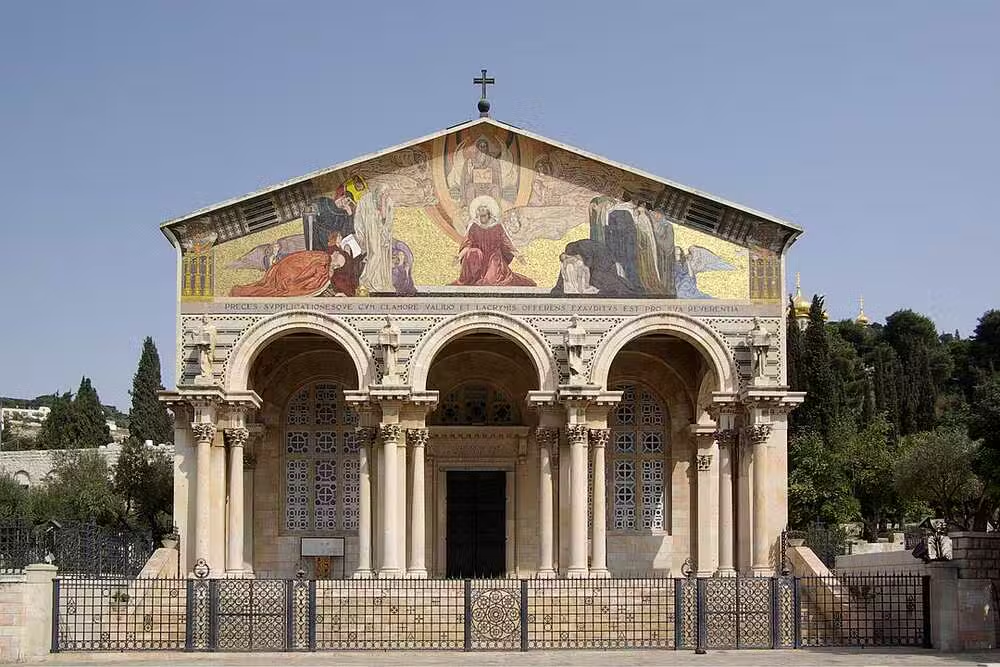
By Berthold Werner – Own work, CC BY-SA 3.0, https://commons.wikimedia.org/w/index.php?curid=14585040
The Mount of Olives is located in the Kidron Valley, east of Jerusalem. It takes its name from the olive trees that populate its slopes. The Gospel narrates that Jesus used to retreat to this mount with his disciples to pray. There he suffered his agony, was arrested, and ascended to Heaven. It is considered one of the most sacred places in the Holy Land.
In the Book of Zechariah, the Mount of Olives is identified as the place from which God will begin to redeem the dead at the end of time. For this reason, Jews have always tried to be buried on the mountain, and from biblical times to today the mountain has been used as a cemetery for the Jews of Jerusalem. There are approximately 150,000 tombs on the mountain, including those of the prophets Zechariah, Haggai, and Malachi.
On the slopes of the Mount of Olives are several holy places that recall the last moments of Jesus and the life of the Blessed Virgin Mary. Among them:
- Chapel of the Ascension
Located on the summit, it commemorates the Ascension of Jesus to Heaven. The small current octagonal sanctuary, under Muslim custody, preserves a rock with the footprints of the Lord and indicates the last place that his feet touched before his ascension. Ancient Byzantine and Crusader churches existed here, later replaced by the current structure.
- Church of the Pater Noster
Very close by is the church where Jesus taught his disciples the Our Father. Built on a cave by order of Constantine, it was destroyed and rebuilt several times. On its walls, versions of the Our Father in more than sixty languages can be read, making it a symbol of unity and universal prayer.
- Dominus Flevit
Further down, the Franciscan church of Dominus Flevit (which means “The Lord wept”) recalls the moment when Jesus wept as he contemplated Jerusalem. Designed by Antonio Barluzzi in 1955 in the shape of a teardrop, it offers one of the most beautiful views of the Old City and an atmosphere of profound peace and contemplation.
- Orthodox Church of Saint Mary Magdalene
Located near the road to Gethsemane, it stands out for its seven golden domes and its Russian architecture. Next to it extends the oldest Jewish cemetery in Jerusalem.
- Garden of Gethsemane and Church of All Nations
At the foot of the mountain is the Garden of Gethsemane, with ancient olive trees that evoke the agony of Jesus before his Passion. The Church of All Nations, also called the Agony, was built in 1924 with the collaboration of various countries. Inside, the rock where Jesus prayed on the night of his arrest is venerated.
- Grotto of the Apostles
Opposite Gethsemane, this cave recalls the place where Jesus and his disciples used to pray. There Peter, James, and John fell asleep while the Lord was in agony.
- Tomb of the Virgin Mary
Near the grotto, the Church of the Assumption or Tomb of Mary commemorates the “transit” of the Mother of God. The current crypt, guarded by the Eastern Orthodox churches, descends by a staircase to the tomb in which the Blessed Virgin would have been placed and from which she would have been assumed into Heaven in Body and Soul.
5. Bethphage
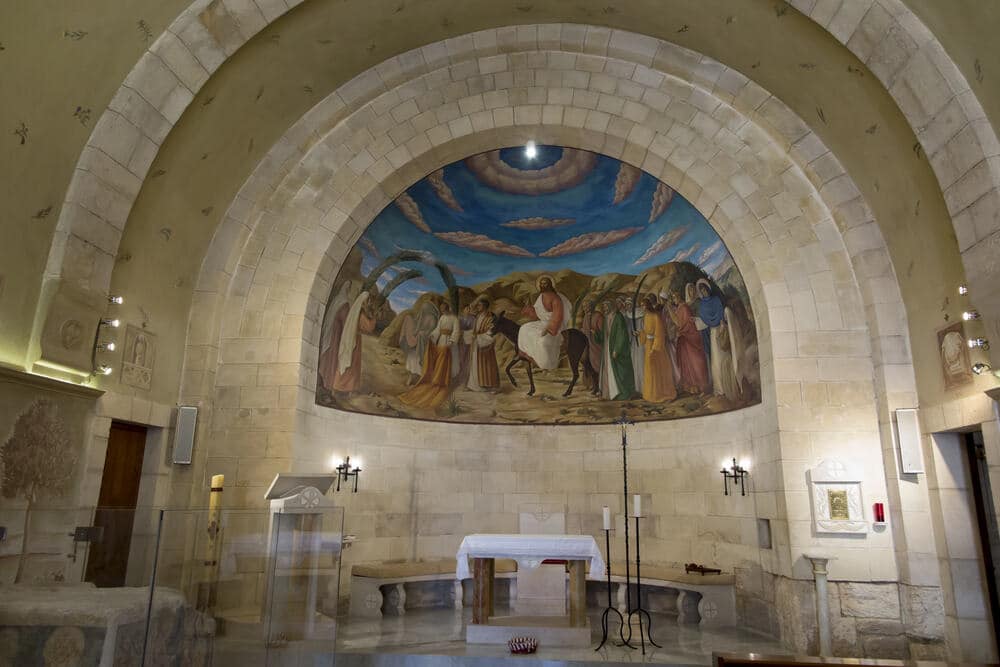
Bethphage is a small town located just across the Mount of Olives. According to tradition, here, the Lord mounted the donkey that led him to his triumphal entry into Jerusalem on Palm Sunday:
“As they approached Jerusalem and came to Bethphage on the Mount of Olives, Jesus sent two disciples, saying to them, “Go to the village ahead of you, and at once you will find a donkey tied there, with her colt by her. Untie them and bring them to me. Jesus climbed onto the donkey and, surrounded by an exultant group, headed towards Jerusalem. And they cried out, “He is the son of David, the prophet Jesus of Nazareth.”
The memory of the triumphal entry of Jesus into Jerusalem began to be celebrated from the earliest times in a manner very similar to the present. This is how a text from the 4th century recounts it:
“On the Sunday that begins the Easter celebrations, the whole people go up to the Mount of Olives, and when the eleventh hour approaches (that is, towards five in the afternoon), that passage of the Gospel is read in which the moment when the children who go to meet Jesus with branches and palms is remembered […]. At that moment the bishop stands up and with him all the people.
From there, that is, from the top of the Mount of Olives, the entire journey is made on foot while the people, preceding the bishop, to the singing of hymns and antiphons, constantly respond: “Blessed is he who comes in the name of the Lord.” And all the children of that place, even those who cannot walk due to their tender age and are in the arms of their parents, all have in their hands branches, some of palm, some of olive; and in the same way that the Lord was led, so the bishop comes accompanied.”
The Church of the Franciscan Convent, built in 1883 on Crusader ruins from the 12th century, commemorates this event.
- For more information on the Convent of Bethphage, visit the website of the Custody of the Holy Land.
- Location: Q7G2+V8R Jerusalem, Israel.
6. Via Dolorosa
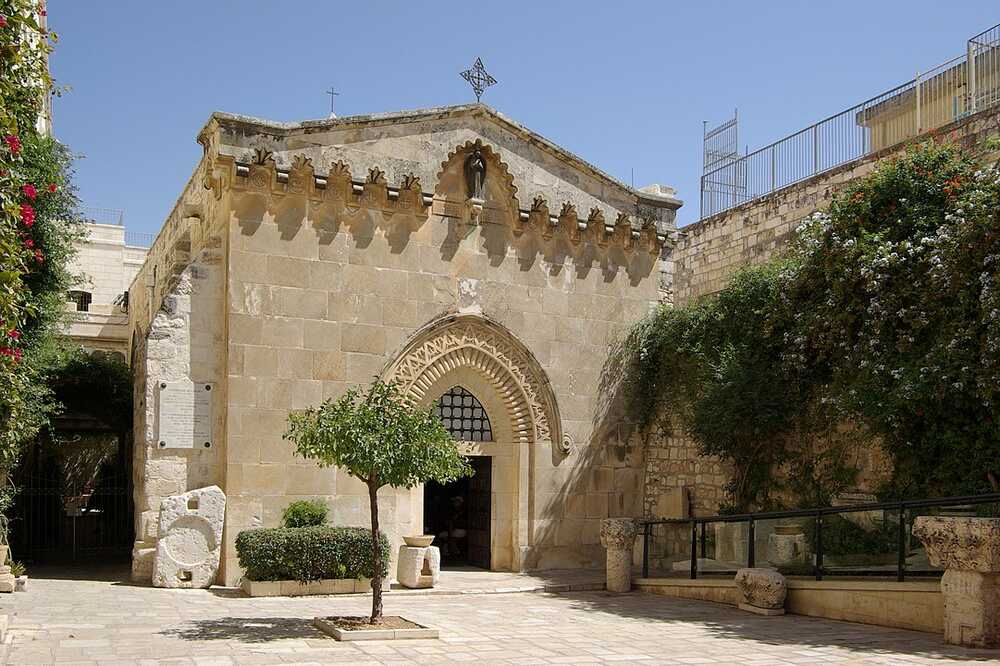
By Berthold Werner – Own work, CC BY-SA 3.0, https://commons.wikimedia.org/w/index.php?curid=16166889
The Via Dolorosa (“Way of Sorrow”) is a processional route of about 600 meters in the Old City of Jerusalem that recalls the path that Jesus walked from the praetorium of Pilate to Calvary, where he was crucified. The current route, established by the Franciscans in the 18th century, is marked by fourteen stations of the Via Crucis, nine in the streets and five inside the Church of the Holy Sepulchre.
Throughout the centuries, the location of the route varied until the Franciscans fixed the itinerary that thousands of pilgrims follow every year today.
- First Station – Condemnation of Jesus: In the Monastery of the Flagellation, where Pilate judged him and the soldiers crowned him with thorns.
- Second Station – Jesus carries the cross: Next to the Ecce Homo Arch, where Pilate showed Christ to the people saying: “Behold the man.”
- Third Station – First fall: Marked by a small Armenian chapel, it recalls the first fall of Jesus under the weight of the cross.
- Fourth Station – Encounter with his mother: An oratory with a bas-relief recalls the moving encounter between Jesus and the Virgin Mary.
- Fifth Station – Simon of Cyrene helps Jesus: An inscription marks the place where Simon the Cyrenian took the cross to help the Lord.
- Sixth Station – Veronica wipes the face of Jesus: In a Greek Catholic church, the memory of the woman who wiped the face of Christ is preserved, his image remaining imprinted on the veil. Veronica’s tomb is also located in the same church.
- Seventh Station – Second Fall: Indicated by a Roman pillar, the second fall of Jesus on the way to Calvary is remembered.
- Eighth Station – Jesus consoles the women of Jerusalem: A carved cross on the wall of an Orthodox monastery recalls his encounter with the pious women.
- Ninth Station – Third Fall: Marked by a Roman column at the entrance of the Coptic monastery, near the Holy Sepulchre.
- Tenth to Fourteenth Station: The last five stations are located inside the Church of the Holy Sepulchre: X: Jesus is stripped of his garments, XI: He is nailed to the cross, XII: He dies on the cross, XIII: His body is taken down and given to his Mother, and XIV: He is placed in the Holy Sepulchre.
7. Basilica of the Holy Sepulchre
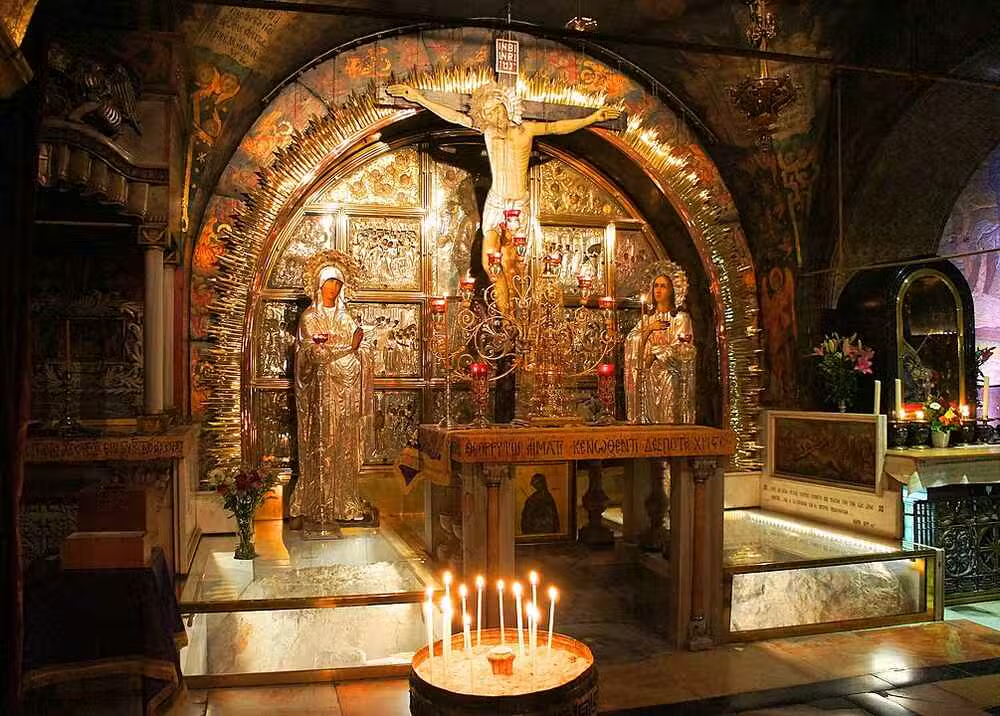
By I, Ondřej Žváček, CC BY 2.5, https://commons.wikimedia.org/w/index.php?curid=25773907
The Church of the Holy Sepulchre — also known as the Church of the Resurrection or Anastasis — located in Jerusalem’s Old City, is considered the holiest site in Christianity and has been a central destination for pilgrims since the 4th century.
The basilica stands over the two key sites of Christ’s Passion and Resurrection, both traditionally enclosed under the same roof:
- Calvary (Golgotha): The hill where Jesus was crucified. Pilgrims ascend a staircase within the church to reach the altar, where they can touch the original rock through an opening in the floor.
- The Empty Tomb (Holy Sepulchre): The cave where Jesus was buried and rose from the dead enclosed within a 19th-century chapel known as the Edicule.
The emperor Constantine the Great, after his mother Helena identified the site, ordered the demolition of an earlier Roman temple (to Jupiter or Venus) and the construction of a complex that included a large basilica (Martyrium) and a rotunda that housed the tomb (Anastasis). It was consecrated in the year 335.
Over the centuries, the church suffered severe damage and destruction, particularly between the 7th and 9th centuries. The Crusaders restored and unified all chapels under one roof in 1149, giving the structure a form similar to the one we see today. It later deteriorated under Ottoman rule. A devastating fire in 1808 led to a reconstruction in Ottoman Baroque style. In 2016–2017, a major restoration of the Edicule revealed the original limestone burial slab for the first time in centuries.
The church is jointly administered by six Christian communities, mainly the Greek Orthodox Church, the Catholic Church (through the Franciscans), and the Armenian Apostolic Church.
As a symbol of this neutrality, the key to the main door has been under the uninterrupted custody of two Muslim families from Jerusalem (Nuseibeh and Joudeh Al-Goudia) since 1187.
Other significant sites inside the Basilica include:
- Stone of Unction: A marble slab at the entrance of the church where, according to tradition, the body of Jesus was prepared for burial.
- Chapel of Adam: It is located under Calvary; tradition says that Jesus was crucified over the burial place of Adam’s skull.
- Chapel of Saint Helena: where the crusaders believed that Helena found the True Cross.
- Syriac Chapel: Contains an opening to an ancient Jewish tomb from the time of Jesus (type kokh), which some identify with the tomb of Joseph of Arimathea and Nicodemus, and which is evidence that the place was outside the city walls.
-
Rotunda and Catholikon: The Rotunda is the circular space surrounding the Edicule. The Catholikon is the central nave of the crusaders, which today functions as the Greek Orthodox cathedral.
- For more information about this church, visit the website of the Custody of the Holy Land.
- Location: Q6HH+9RX Jerusalem, Israel.
If you want to visit these churches, remember that your Catholic Mass Times app will be your best travel companion. It will help you find local Mass schedules, Confession services, and Adoration times, ensuring that your spiritual pilgrimage is always connected to the sacraments. Download it now.
Jerusalem is the city where the central moments of Christ’s life occurred: the Last Supper, the prayer in Gethsemane, the Passion, the Crucifixion, and the Resurrection.
Pilgrimage to Jerusalem is a way of prayer very pleasing to God. Being in the places where Jesus taught, prayed, and suffered helps the believer to strengthen their spiritual life, reflect on their life, and draw closer to God. The pilgrimage inspires the faithful to renew commitments to Christian life, serve with more love, and bear witness to their faith. Many return spiritually transformed.
To make the most of your pilgrimage, we recommend bringing a guidebook with explanations and information about the sacred sites, along with meditations, Scripture passages, and prayers to help you live this journey in a true spirit of contemplation.
It is very helpful to walk through Jerusalem with your Bible, especially with the Gospel. You could read the texts beforehand to prepare your heart or during your visit to contemplate and meditate better. How wonderful it would be if you could go with a group of pilgrims accompanied by a priest at the head to celebrate Holy Mass in the holy places and assist you spiritually on your pilgrimage.
What are the most Important Places to Visit in Jerusalem?
Among the most significant Christian sites are the Basilica of the Holy Sepulchre, the Via Dolorosa, the Mount of Olives, Mount Zion, the Church of Saint Anne, the Pool of Bethesda, and Bethphage. Each of them recalls fundamental moments of the life, passion, death, and resurrection of Jesus.
Why is Jerusalem Considered a Holy City?
Because the central mysteries of the Christian faith occurred there: the Last Supper, the Passion, the Crucifixion, and the Resurrection of the Lord. In addition, it was the site of the ancient Temple of Israel and preserves the most venerated sites for Jews, Christians, and Muslims.
When is the Best Time to Make a Pilgrimage to Jerusalem?
Most pilgrims travel during Holy Week or Eastertide, when the holy places are filled with liturgical celebrations. However, any time of year is conducive to experiencing a profound spiritual experience in the Holy Land.
Can You Attend Mass in the Holy Places?
Yes. In almost all the sanctuaries of Jerusalem, daily Masses are celebrated, especially in the temples guarded by the Franciscans. You can check the schedules through the Mass Times app, which will help you find the nearest church with Mass, Confession, and Adoration schedules.
What is Recommended to Bring to Make the most of the Pilgrimage?
It is advisable to bring a Bible to read the corresponding passages in each place, a spiritual guide or devotional, comfortable clothes, and an attitude of recollection and prayer. If possible, going on pilgrimage accompanied by a priest greatly enriches the experience.

